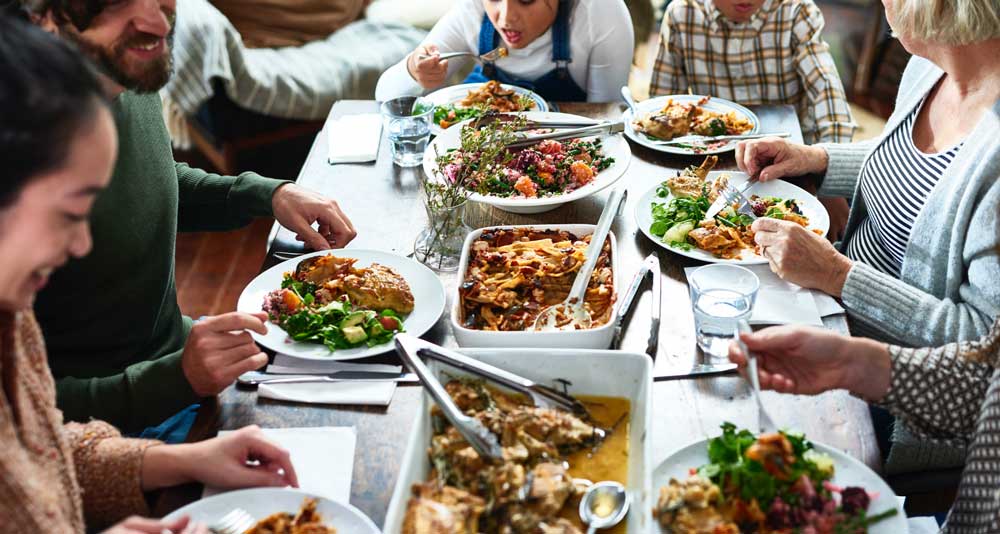
In today's fast-paced world, ensuring food safety is of utmost importance. From hand washing to the prevention of foodborne illnesses, there are ten critical aspects that demand our attention.
This article aims to provide concise and precise information on these aspects, including:
- Proper hand hygiene
- Avoiding cross contamination
- Maintaining temperature control
- Storing food correctly
- Being aware of allergens
- Handling food properly
- Cooking at safe temperatures
- Understanding foodborne illnesses
- Practicing good personal hygiene
By following these guidelines, we can prioritize safety and protect ourselves and others from potential hazards.
Hand Washing
Hand washing is an essential practice in ensuring food safety. Proper hand hygiene is crucial to prevent the spread of harmful bacteria and viruses that can cause foodborne illnesses.
To effectively wash hands, it is important to follow the correct hand washing techniques. Begin by wetting hands with clean, running water and applying soap. Rub hands together vigorously, making sure to scrub all surfaces, including the back of hands, between fingers, and under nails, for at least 20 seconds.
Rinse hands thoroughly and dry them with a clean towel or air dryer. This simple yet critical practice helps remove dirt, germs, and other contaminants that may be present on hands, reducing the risk of cross-contamination and ensuring safe food handling.
Cross Contamination
Cross contamination is a significant risk factor in food safety, as it can lead to the proliferation of harmful microorganisms and the transmission of foodborne illnesses. To prevent cross contamination risks and ensure food safety, it is important to be aware of allergens and take necessary precautions.

Here are three key steps to prevent cross contamination:
- Separate: Keep raw meats, poultry, and seafood separate from ready-to-eat foods to avoid potential contamination. Use separate cutting boards, utensils, and storage containers to prevent the spread of harmful bacteria.
- Clean: Thoroughly wash all surfaces, utensils, and hands with hot soapy water before and after handling different types of food. This helps eliminate any potential pathogens that may cause illness.
- Store Properly: Store raw meats, poultry, and seafood in leak-proof containers on the bottom shelf of the refrigerator to prevent their juices from dripping onto other foods. This will minimize the risk of cross contamination and the spread of harmful bacteria.
Temperature Control
Maintaining proper temperature control is a crucial aspect of ensuring food safety. Temperature monitoring plays a vital role in preventing the growth of harmful bacteria and reducing the risk of foodborne illnesses. Food safety regulations have established guidelines for temperature control to ensure that food is stored, prepared, and served at safe temperatures.
Monitoring the temperature of food is essential throughout the entire food handling process, from storage to cooking and serving. Cold foods should be kept at or below 40°F (4°C) to prevent bacterial growth, while hot foods should be kept at or above 140°F (60°C) to maintain their safety.
Regular temperature checks and proper equipment calibration are necessary to ensure accurate readings. Refrigerators, freezers, and cooking equipment should be regularly inspected and maintained to ensure they are functioning properly.
Proper Storage
Proper storage is a critical aspect of food safety as it helps maintain the quality and prevent the growth of harmful bacteria.
Temperature control is of utmost importance in proper storage to ensure that perishable foods are stored at the correct temperature to prevent spoilage and foodborne illnesses.
Additionally, proper storage techniques can help prevent cross-contamination risks by ensuring that different types of food are stored separately and in appropriate containers.

Temperature Control Importance
To ensure food safety, it is crucial to maintain the appropriate temperature during storage. Temperature control plays a vital role in preventing the growth of harmful bacteria and reducing the risk of foodborne illnesses. Here are three reasons why temperature monitoring and safe food handling are essential:
- Prevents bacterial growth: Proper storage temperatures inhibit the growth of bacteria that can cause food poisoning. By keeping perishable foods refrigerated at or below 40°F (4°C) and frozen foods at or below 0°F (-18°C), you can significantly reduce the risk of bacterial contamination.
- Preserves food quality: Maintaining the right temperature helps preserve the taste, texture, and nutritional value of food. By storing food at the correct temperature, you can extend its shelf life and minimize food waste.
- Ensures regulatory compliance: Temperature control is a crucial aspect of food safety regulations. By adhering to proper storage temperatures, you demonstrate your commitment to providing safe and high-quality food, ensuring compliance with health and safety standards.
Preventing Cross-Contamination Risks
Preventing cross-contamination risks in food storage is essential for maintaining food safety standards and ensuring the health of consumers. Cross-contamination occurs when harmful bacteria or other contaminants are transferred from one food to another, leading to potential foodborne illnesses. To prevent food spoilage and cross-contamination, it is crucial to implement proper storage practices.
One of the key cross-contamination prevention measures is separating raw and cooked foods. Raw meats, poultry, and seafood should be stored separately from ready-to-eat foods to avoid the transfer of harmful bacteria. Additionally, using sealed containers or wrapping perishable foods properly can prevent cross-contamination.
Regularly cleaning and sanitizing storage areas, including refrigerators and food preparation surfaces, is also essential. This helps eliminate any potential bacteria or contaminants that may contribute to cross-contamination.
Allergen Awareness
Awareness of allergens is crucial for ensuring food safety and preventing adverse reactions in individuals with allergies. Here are three important aspects of allergen awareness:
- Allergen labeling: Food manufacturers are required to clearly label products that contain common allergens such as peanuts, tree nuts, milk, eggs, fish, shellfish, soy, and wheat. Reading labels carefully can help individuals with allergies avoid consuming these allergens and prevent allergic reactions.
- Cross-contact prevention: Cross-contact occurs when allergens come into contact with allergen-free foods, leading to potential contamination. Restaurants and food establishments should have proper procedures in place to prevent cross-contact, including separate preparation areas, utensils, and storage for allergen-free items.
- Education and communication: It is essential for food handlers and staff to be trained on allergen awareness. This includes understanding the symptoms of an allergic reaction, knowing how to prevent cross-contact, and effectively communicating with customers about allergen concerns.
Cleanliness
Cleanliness is a critical aspect of food safety that cannot be overlooked. Proper sanitizing and hygiene practices are essential to prevent the spread of harmful bacteria and foodborne illnesses.
Importance of Sanitizing
The adherence to proper sanitization practices is an essential component of maintaining food safety standards. By following effective sanitizing techniques and sanitization guidelines, food establishments can significantly reduce the risk of foodborne illnesses and ensure the safety of their customers.

Here are three reasons why sanitizing is of utmost importance:
- Preventing cross-contamination: Proper sanitization helps prevent the transfer of harmful bacteria, viruses, and other pathogens from contaminated surfaces to food. This reduces the risk of foodborne illnesses and protects the health of consumers.
- Maintaining cleanliness: Sanitizing ensures that food preparation areas, utensils, and equipment are kept clean and free from dirt, debris, and other contaminants. This promotes a hygienic environment and safeguards the integrity of the food being prepared.
- Meeting regulatory requirements: Adhering to sanitization guidelines is crucial for compliance with food safety regulations and standards. Failure to maintain proper sanitation practices can result in penalties, legal issues, and damage to the reputation of the establishment.
Hygiene Practices for Prevention
To ensure the highest standards of food safety, it is imperative to implement proper hygiene practices for prevention, which include thorough cleaning and sanitization procedures.
Hygiene practices for food preparation are crucial in preventing the contamination of food with harmful bacteria and other pathogens. This includes regular handwashing with soap and water, using clean utensils and cutting boards, and properly storing and handling ingredients.
It is also important to sanitize food preparation surfaces and equipment regularly to eliminate any potential sources of contamination.
In addition, hygiene practices for food service are essential to prevent the spread of foodborne illnesses. This includes maintaining a clean and organized kitchen, practicing good personal hygiene, and ensuring that food is stored and served at the correct temperatures.
Food Handling
Proper handling of food is essential for maintaining food safety standards. When it comes to food preparation and kitchen safety, there are several critical aspects that should not be overlooked:
- Cleanliness: Ensure that all surfaces, utensils, and equipment are thoroughly cleaned before and after use. This helps prevent cross-contamination and the spread of harmful bacteria.
- Temperature control: Keep hot foods hot and cold foods cold to prevent bacterial growth. Use a thermometer to ensure that cooked foods reach a safe internal temperature.
- Storage: Store raw and cooked foods separately to avoid cross-contamination. Keep perishable items refrigerated promptly and discard any food that shows signs of spoilage.
Cooking Temperatures
Maintaining appropriate cooking temperatures is crucial for ensuring food safety and preventing the growth of harmful bacteria. Cooking food to the correct temperature kills bacteria and other pathogens that may be present.

Different types of food require different cooking techniques and temperatures to ensure they are safe to eat. It is important to follow food safety guidelines to prevent foodborne illnesses.
For example, poultry should be cooked to an internal temperature of 165°F (74°C), while ground meats should reach a temperature of 160°F (71°C). Seafood, on the other hand, should be cooked to an internal temperature of 145°F (63°C).
Using a food thermometer is an effective way to ensure that food has been cooked to the appropriate temperature, reducing the risk of foodborne illnesses.
Foodborne Illnesses
Foodborne illnesses are a significant concern in the realm of food safety. In order to prevent such illnesses, it is crucial to implement effective prevention methods.
Additionally, understanding the common symptoms associated with foodborne illnesses can help in identifying and addressing cases promptly.
Prevention Methods for Foodborne Illnesses
One essential measure for preventing foodborne illnesses is ensuring proper hygiene practices. By following food safety guidelines and implementing preventive measures, individuals can significantly reduce the risk of contamination and the occurrence of foodborne illnesses. Here are three key prevention methods to consider:
- Regular handwashing: Thoroughly washing hands with soap and water before and after handling food, after using the restroom, and after touching any potentially contaminated surfaces can help prevent the spread of harmful bacteria and viruses.
- Safe food handling and storage: Properly storing and handling food at appropriate temperatures can inhibit the growth of bacteria and other pathogens. Refrigerating perishable foods promptly and avoiding cross-contamination between raw and cooked foods are important practices to follow.
- Cooking food thoroughly: Cooking food to the recommended internal temperature can kill harmful bacteria and viruses. Using a food thermometer to ensure proper cooking temperatures for different types of food is crucial.
Adhering to these preventive measures can significantly reduce the risk of foodborne illnesses and promote overall food safety.

Common Foodborne Illness Symptoms
The first sign of a foodborne illness is often the presence of specific symptoms. These symptoms can vary depending on the type of food poisoning and the individual's immune response. Common food poisoning symptoms include nausea, vomiting, diarrhea, abdominal pain, fever, and fatigue. In some cases, individuals may also experience muscle aches, headache, and dehydration.
It is important to note that these symptoms can appear within hours or days after consuming contaminated food. If you experience any of these symptoms, it is crucial to seek medical attention and report the incident to the appropriate authorities.
Food safety regulations play a vital role in preventing foodborne illnesses by enforcing strict guidelines for food handling, storage, and preparation. Following these regulations can help minimize the risk of contamination and protect public health.
Personal Hygiene
Proper implementation of personal hygiene practices is crucial in maintaining the safety and integrity of food. Personal care plays a significant role in preventing the growth and spread of bacteria that can cause foodborne illnesses.
Here are three key practices that individuals should follow to ensure food safety:
- Hand Washing: Thoroughly washing hands with soap and warm water for at least 20 seconds before handling food is essential. This practice helps remove dirt, bacteria, and other harmful microorganisms from the hands.
- Clean Clothing and Protective Gear: Wearing clean and appropriate clothing, such as aprons and hairnets, helps prevent the transfer of contaminants to the food. Regularly washing and changing these garments is necessary to maintain hygiene standards.
- Personal Health Monitoring: Food handlers should regularly monitor their health and report any symptoms of illness, such as diarrhea or vomiting, to their supervisors. Sick employees should be prohibited from handling food to prevent the transmission of pathogens.
Frequently Asked Questions
What Are the Different Types of Foodborne Illnesses and Their Symptoms?
Foodborne illnesses are caused by consuming contaminated food or water. Common types include salmonella, E. coli, and norovirus. Symptoms can range from nausea and vomiting to diarrhea and fever. Prevention measures and treatment options are available to mitigate the risks and address the symptoms.
How Can I Prevent Cross Contamination in My Kitchen?
To prevent cross contamination in your kitchen, it is important to follow best practices such as using separate cutting boards for raw and cooked foods and properly sanitizing surfaces. Common mistakes to avoid include using the same utensils for different ingredients and not properly washing hands.

What Are Some Common Allergens That People Should Be Aware Of?
Common allergens that people should be aware of include peanuts, tree nuts, milk, eggs, fish, shellfish, soy, and wheat. Food establishments must comply with food labeling requirements to ensure allergen awareness and promote consumer safety.
How Often Should I Clean and Sanitize My Food Preparation Surfaces?
Food preparation surfaces should be cleaned and sanitized regularly to ensure food safety. The frequency of cleaning depends on the level of use and risk of contamination. Sanitizing methods, such as using a bleach solution, should be employed to kill harmful bacteria and viruses.
What Are the Recommended Cooking Temperatures for Different Types of Meat?
Recommended cooking temperatures for different types of meat vary to ensure the elimination of harmful bacteria. Cooking time guidelines should be followed to guarantee that meat is cooked thoroughly and safe for consumption.
 Family Craft ProjectsHome ImprovementCooking and BakingReuse and RecycleDIY GiftsEco-Friendly ProjectsDIY Home SolutionsSeasonal ActivitiesFun and GamesLearn TogetherPrivacy PolicyTerms And Conditions
Family Craft ProjectsHome ImprovementCooking and BakingReuse and RecycleDIY GiftsEco-Friendly ProjectsDIY Home SolutionsSeasonal ActivitiesFun and GamesLearn TogetherPrivacy PolicyTerms And Conditions

 Family Craft ProjectsHome ImprovementCooking and BakingReuse and RecycleDIY GiftsEco-Friendly ProjectsDIY Home SolutionsSeasonal ActivitiesFun and GamesLearn TogetherPrivacy PolicyTerms And Conditions
Family Craft ProjectsHome ImprovementCooking and BakingReuse and RecycleDIY GiftsEco-Friendly ProjectsDIY Home SolutionsSeasonal ActivitiesFun and GamesLearn TogetherPrivacy PolicyTerms And Conditions
